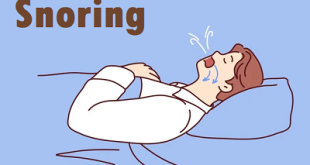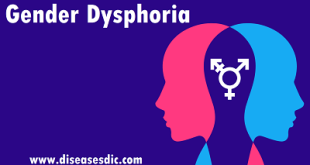Definition
Schizoaffective disorder is a complex mental health condition that combines features of both schizophrenia and mood disorders, such as depression or bipolar disorder. Individuals experience persistent psychotic symptoms, resembling those found in schizophrenia, such as hallucinations (perceptions without real external stimuli) and delusions (strongly held false beliefs not based in reality). These symptoms often lead to significant impairment in daily functioning and can create substantial distress for the affected individuals. Additionally, individuals with schizoaffective disorder also go through periods of mood disturbances, which can include episodes of major depression, manic episodes, or a mix of both (known as a mixed episode). These mood symptoms are present alongside the psychotic symptoms, making schizoaffective disorder distinct from schizophrenia or mood disorders alone.
The exact cause is not well understood, but it is believed to result from a combination of genetic, biological, and environmental factors. Diagnosis and treatment can be challenging due to the overlap of symptoms with other mental health conditions. However, a comprehensive evaluation by mental health professionals, including psychiatrists and psychologists, is crucial for an accurate diagnosis. Treatment typically involves a combination of antipsychotic medications, mood stabilizers, and psychotherapy, tailored to address both the psychotic and mood-related symptoms. Support from family, friends, and a strong social network is also vital in helping individuals with schizoaffective disorder manage their condition and improve their overall quality of life.
Epidemiology of Schizoaffective Disorder
The diagnostic criteria have been reworded and addended since its inclusion in the DSM, making it difficult to subsequently conduct appropriate epidemiological studies. Thus, there have been no large-scale studies on the epidemiology, incidence, or prevalence of schizoaffective disorder. Research shows that 30% of cases occur between the ages of 25 and 35, and it occurs more frequently in women. It occurs about one-third as frequently as schizophrenia, and the lifetime prevalence appears to be around 0.3%. Estimates are that this disorder comprises 10 to 30% of inpatient admissions for psychosis.
Pathophysiology
The exact pathophysiology is currently unknown. Some studies have shown that abnormalities in dopamine, norepinephrine, and serotonin may play a role. Also, white matter abnormalities in multiple areas of the brain, particularly the right lentiform nucleus, left temporal gyrus, and right precuneus, are associated with schizophrenia and schizoaffective disorder. Researchers have also found reduced hippocampal volumes and distinct deformations in the medial and lateral thalamic regions in those with schizoaffective disorder in comparison to controls.
Types of Schizoaffective Disorder
There are 3 main types:
Schizoaffective Disorder manic type
In this type, an individual has both psychotic and manic symptoms, occurring within one episode.
Schizoaffective Disorder depressive type
In this type, an individual has both psychotic and depressive symptoms, occurring within one episode.
Schizoaffective Disorder mixed type
In this type, an individual has psychotic symptoms with both manic and depressive symptoms. However, the psychotic symptoms are independent and not necessarily related to the bipolar disorder symptoms.
Causes of Schizoaffective Disorder
The exact cause isn’t known. Schizoaffective disorder may be caused by a combination of factors:
- Genetics If you have a parent or sibling with schizoaffective disorder, you are more likely to develop the condition.
- Brain Structure and Chemistry People with schizoaffective disorder may have certain differences in brain function.
- Mind-Altering Drug Use Some drugs, including cannabis and psychoactive drugs such as LSD, have been linked to the development of schizoaffective disorder.
- Stress Distressing events such as the end of a marriage, job loss, or a death in the family can trigger this condition.
Symptoms of Schizoaffective Disorder
Symptoms are different in each person. Often, people with schizoaffective disorder seek treatment for problems with mood, daily function, or abnormal thoughts.
Psychosis and mood problems may occur at the same time or by themselves. The disorder may involve cycles of severe symptoms followed by improvement.
The symptoms can include:
- Changes in appetite and energy
- Disorganized speech that is not logical
- False beliefs (delusions), such as thinking someone is trying to harm you (paranoia) or thinking that special messages are hidden in common places (delusions of reference)
- Lack of concern with hygiene or grooming
- Mood that is either too good, or depressed or irritable
- Problems sleeping
- Problems with concentration
- Sadness or hopelessness
- Seeing or hearing things that are not there (hallucinations)
- Social isolation
- Speaking so quickly that others cannot interrupt you
Risk Factors
- Family history of mental illness (especially when having first-degree relatives who have schizoaffective disorder, bipolar disorder, or schizophrenia)
- The presence of other mental health disorders
- Substance abuse
- Having been the victim of abuse and/or neglect
- Developmental delays
- Prenatal exposure to certain toxins or illnesses (including drugs and alcohol)
Complications of Schizoaffective Disorder
There are a number of potential complications of having schizoaffective disorder, including:
- Health problems
- Homelessness
- Impaired academic and occupational functioning
- Interpersonal conflicts
- Poverty
- Social isolation
- Substance use
- Suicidal thoughts and attempts
- Trouble adhering to treatment
- Unemployment
Diagnosis
Diagnosis involves ruling out other mental health disorders and concluding that symptoms are not due to substance use, medication or a medical condition. Determining a diagnosis of schizoaffective disorder may include:
- Physical exam. This may be done to help rule out other problems that could be causing symptoms and to check for any related complications.
- Tests and screenings. These may include tests that help rule out conditions with similar symptoms, and screening for alcohol and drugs. In certain situations, the doctor may also request imaging studies, such as an MRI or CT scan.
- Psychiatric evaluation. A doctor or mental health professional checks mental status by observing appearance and demeanor and asking about thoughts, moods, delusions, hallucinations, substance use and potential for suicide. This also includes a discussion of family and personal history.
- Diagnostic criteria for schizoaffective disorder. Your doctor or mental health professional may use the criteria in the Diagnostic and Statistical Manual of Mental Disorders DSM-5, published by the American Psychiatric Association.
Treatment for Schizoaffective Disorder
People with schizoaffective disorder generally respond best to a combination of medications, psychotherapy and life skills training. Treatment varies, depending on the type and severity of symptoms and whether the disorder is the depressive or bipolar type. In some cases, hospitalization may be needed. Long-term treatment can help to manage the symptoms.
Medications
In general, doctors prescribe medications for schizoaffective disorder to relieve psychotic symptoms, stabilize mood and treat depression. These medications may include:
- Antipsychotics. The only medication approved by the Food and Drug Administration specifically for the treatment of schizoaffective disorder is the antipsychotic drug paliperidone (Invega). However, doctors may prescribe other antipsychotic drugs to help manage psychotic symptoms such as delusions and hallucinations.
- Mood-stabilizing medications. When the schizoaffective disorder is bipolar type, mood stabilizers can help level out the mania highs and depression lows.
- Antidepressants. When depression is the underlying mood disorder, antidepressants can help manage feelings of sadness, hopelessness, or difficulty with sleep and concentration.
Psychotherapy
In addition to medication, psychotherapy, also called talk therapy, may help. Psychotherapy may include:
- Individual therapy. Psychotherapy may help to normalize thought patterns and reduce symptoms. Building a trusting relationship in therapy can help people with schizoaffective disorder better understand their condition and learn to manage symptoms. Effective sessions focus on real-life plans, problems, relationships and coping strategies.
- Family or group therapy. Treatment can be more effective when people with schizoaffective disorder are able to discuss their real-life problems with others. Supportive group settings can also help reduce social isolation, provide a reality check during periods of psychosis, increase appropriate use of medications and develop better social skills.
Life skills training
Learning social and vocational skills can help reduce isolation and improve quality of life.
- Social skills training. This focuses on improving communication and social interactions and improving the ability to participate in daily activities. New skills and behaviors specific to settings such as the home or workplace can be practiced.
- Vocational rehabilitation and supported employment. This focuses on helping people with schizoaffective disorder prepare for, find and keep jobs.
Hospitalization
During crisis periods or times of severe symptoms, hospitalization may be necessary to ensure safety, proper nutrition, adequate sleep and basic personal care.
Electroconvulsive therapy
For adults who do not respond to psychotherapy or medications, electroconvulsive therapy (ECT) may be considered.
Prevention
Preventing schizoaffective disorder is challenging because its exact cause is not well understood and involves a complex interplay of genetic, biological, and environmental factors. However, there are some general lifestyle choices and strategies that can support overall mental health, which might reduce the risk of developing this disorder:
- Healthy Lifestyle: Encourage regular exercise, balanced nutrition, and sufficient sleep. Physical health often contributes to mental well-being.
- Stress Management: Teach stress-reduction techniques such as mindfulness, meditation, yoga, or hobbies to help cope with life’s challenges.
- Avoid Substance Abuse: Substance abuse, including drugs and alcohol, can trigger or worsen mental health conditions. Avoiding these substances can be crucial.
- Early Intervention: If there’s a family history of mental health disorders, it’s important to be aware of the signs and symptoms. Early intervention and seeking help if someone is experiencing mental health difficulties can make a significant difference.
- Supportive Environment: Foster a supportive and understanding family and social environment. Emotional support is essential in coping with life’s stresses.
- Healthy Relationships: Encourage healthy relationships and communication skills. Healthy relationships provide emotional support and can buffer against the effects of stress.
- Education and Awareness: Educate individuals and communities about mental health. Awareness can reduce stigma and promote understanding, leading to earlier intervention and support.
- Regular Check-ups: Regular medical check-ups can ensure any emerging mental health concerns are addressed promptly.
Remember, while these steps can support overall mental health, mental illnesses like schizoaffective disorder are complex and multifaceted.
 Diseases Treatments Dictionary This is complete solution to read all diseases treatments Which covers Prevention, Causes, Symptoms, Medical Terms, Drugs, Prescription, Natural Remedies with cures and Treatments. Most of the common diseases were listed in names, split with categories.
Diseases Treatments Dictionary This is complete solution to read all diseases treatments Which covers Prevention, Causes, Symptoms, Medical Terms, Drugs, Prescription, Natural Remedies with cures and Treatments. Most of the common diseases were listed in names, split with categories.







